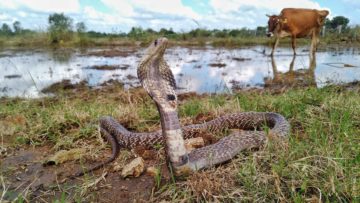Kamala Thiagarajan in Undark:
 According to the Million Death Study, one of the largest ongoing global studies of premature mortality, around 58,000 Indians die from snakebites every year, the highest rate in the world. And a growing proportion of these bites come from less common species of venomous snakes in specific pockets of the country, for which, according to researchers at the Indian Institute of Science, available antivenin — also often called antivenom — are not very effective.
According to the Million Death Study, one of the largest ongoing global studies of premature mortality, around 58,000 Indians die from snakebites every year, the highest rate in the world. And a growing proportion of these bites come from less common species of venomous snakes in specific pockets of the country, for which, according to researchers at the Indian Institute of Science, available antivenin — also often called antivenom — are not very effective.
People living in India’s rural areas, who are exposed to a broad range of snakes, are particularly at risk. Treating these patients can be difficult, said Gnaneswar Ch, project leader of the Snake Conservation & Snakebite Mitigation Project at the Madras Crocodile Bank Trust Center for Herpetology, where the Irula Co-op is located.
For instance, in Tamil Nadu, data on snakebites and how to prevent them — gathered by Gnaneswar’s team since 2015 — suggest that people are most likely to be bitten on their legs when they walk across agricultural fields barefoot. And they may not seek treatment at the hospital until hours after the bite, turning first to natural or folk remedies. As a result, Gnaneswar said, “we’re seeing many amputations and loss of limbs.”
More here.
